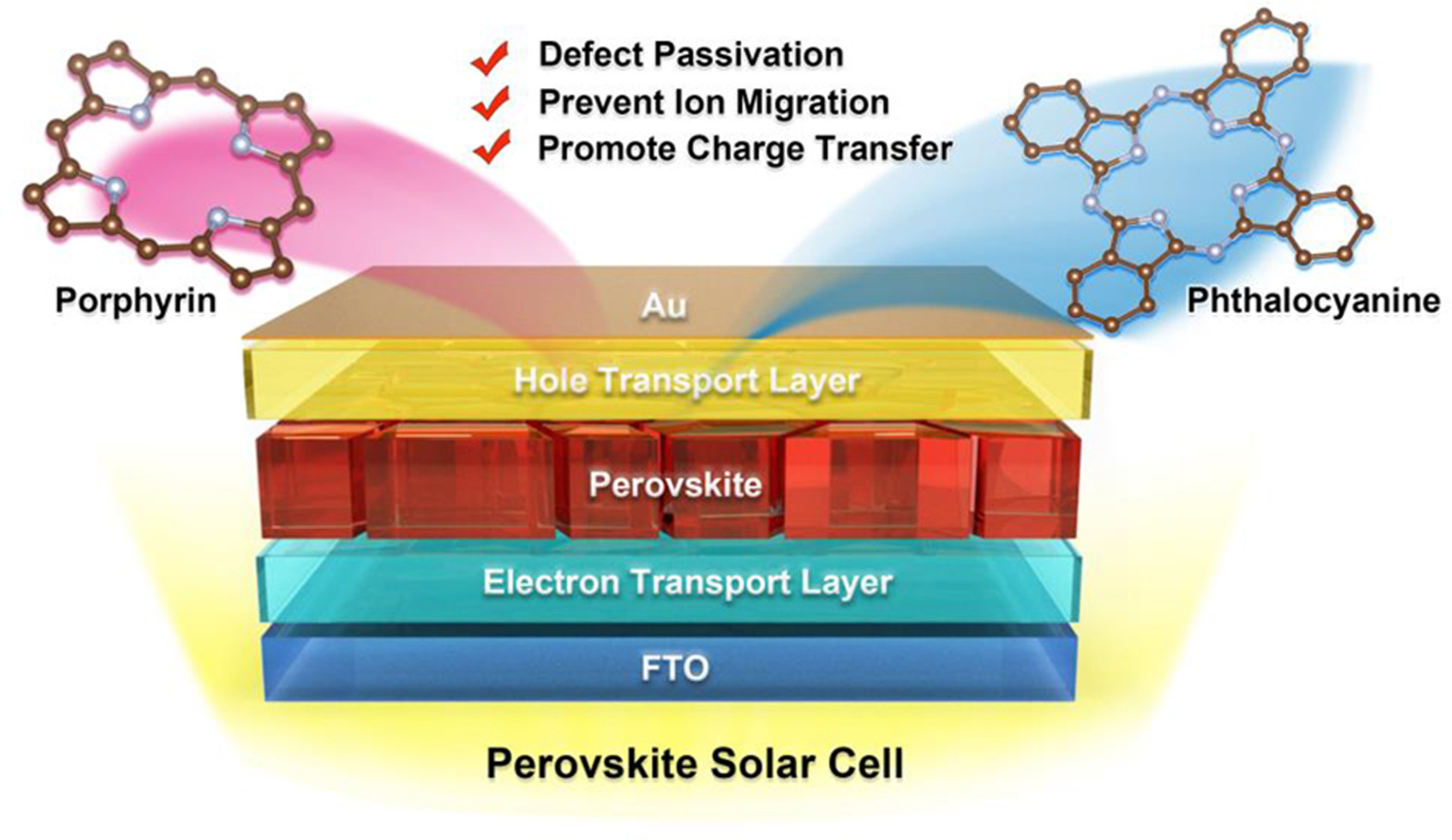
Long-lifespan aqueous alkaline and acidic batteries enabled by redox conjugated covalent organic polymer anodes
Yuanzhe Lu, Yuanqin Zhu*, Linfeng Zhong*, Dingshan Yu*
Submit a Manuscript
Chen Lu, Zefeng Yu, Jing Cao*
Chin. J. Struct. Chem., 2024, 43: 100240. DOI: 10.1016/j.cjsc.2024.100240
March 15, 2024
Porphyrin; Phthalocyanine; Charge transport; Interfacial chemistry; Perovskite solar cells
ABSTRACT
Porphyrin and phthalocyanine compounds belong to a class of large and aromatic macrocyclic compounds. Owing to their unique structures and electronic properties, they have found widespread applications in optoelectronic devices. In recent years, the doping of porphyrins and phthalocyanines into perovskite solar cells (PSCs) has emerged as an effective strategy to enhance device performance and stability. This doping strategy enables the modulation of perovskite film crystallization and surface defects, thereby improving charge transfer and enhancing the photo-conversion efficiency. As sensitizers, porphyrins and phthalocyanines absorb light in the visible and near-infrared spectral ranges, providing an advantage to the light absorption characteristics of PSCs. Additionally, their roles in interface modification and defect repair contribute to the long-term stability of the devices. The central metal of porphyrin can also adsorb ions and prevent the migration of harmful ions. This review summarizes the recent progress in the research on porphyrin and phthalocyanine-doped PSCs, emphasizing their potential value in enhancing optoelectronic performance, increasing stability and expanding the application scope of these devices.






